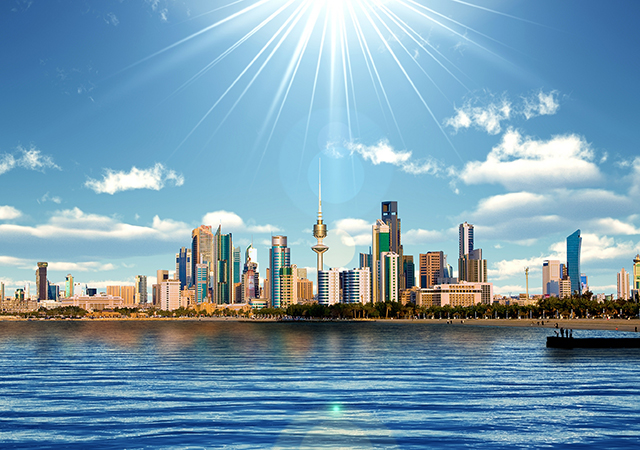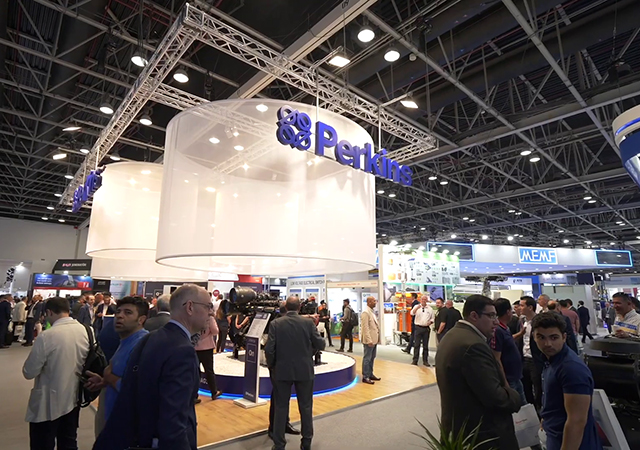
 EGA Jebel Ali has made good progress with replacement of D18 cells with D18+ Technology
EGA Jebel Ali has made good progress with replacement of D18 cells with D18+ Technology
With an annual hot metal production capacity in excess of 2.4 million tonnes, the UAE-based Emirates Global Aluminium (EGA) not only ranks among the world’s top five primary aluminium producers but is also the largest in the Gulf region. Moreover, the UAE is the fourth largest aluminium producing country in the world.
These strong positions are no mean feat, given that EGA only began operating 36 years ago, at the end of 1979. With a loyal customer base in almost 70 countries across the world, EGA is widely renowned internationally for producing premium purity metal and superior quality primary aluminium products, all of which are made-to-order and delivered door-to-door. Approximately 88.5 per cent of EGA’s entire annual production is exported, primarily to end-users in Asia, Europe, the Mena region and the Americas.
Having invested substantially over the years in developing advanced proprietary smelting technologies that deliver higher production volumes, as well as improved current and environmental efficiencies, EGA has also earned a rightful reputation within the global aluminium industry as a provider of best-in-class, high amperage technologies. EGA’s DX+ Smelting Technology – developed entirely in-house at EGA subsidiary Dubai Aluminium (Dubal, also known as EGA Jebel Ali) – is a case in point.
TECHNOLOGY
After an extensive pilot phase (2010 to 2013) at Dubal, the exceptional performance capabilities of DX+ Smelting Technology have been clearly demonstrated at EGA subsidiary Emirates Aluminium (Emal, also known as EGA Al Taweelah), where 444 DX+ Technology cells were installed in Emal Potline 3 constructed during Emal Phase II. Emal Potline 3 was fully commissioned by mid-2014 and has been operating steadily at 455 kA since March 11, 2015. Operating statistics show that, at industrial scale, DX+ Smelting Technology offers several benefits in terms of current efficiency, energy consumption and environmental performance indicators; as well as the added advantage of higher productivity.
Moreover, the cost per tonne to construct a smelter incorporating DX+ Smelting Technology is highly competitive when compared to other technologies, while the construction period is also significantly shorter. Dependability, prolonged pot life and improved workforce output further contribute to reduced operating expenditure and lower total cost of ownership. These factors, together with increased productivity, improved energy efficiency and reduced environmental impact, mean that DX+ Smelting Technology provides a truly sustainable solution.
These leading attributes contributed to Aluminium Bahrain BSC (Alba) selecting EGA’s DX+ Smelting Technology in December 2012 for its Line 6 Bankable Feasibility Study; followed by the milestone decision by Alba to select the same technology for its Line 6 Expansion Project. Announced in early-July 2015, the multi-billion-dollar project will entail a new potline that will boost Alba’s annual production by an additional 514,000 tonnes per year. Construction of the new Line 6 is expected to start in the first half of 2016, with commissioning scheduled for early 2019.
ADVANCED SYSTEM
Further efforts to develop lower Capex and even lower energy, high amperage reduction cells have led to EGA’s experts designing DX+ Ultra Smelting Technology, which is expected to achieve substantially lower specific energy consumption than earlier generation cells. Enhancements to overall cell design enables shorter pot-to-pot distance, in turn translating into lower Capex per installed tonne of capacity and higher production per building surface area. The end-result is a best-in-class solution.
 |
|
At EGA Al Taweelah – Emirates Aluminium (Emal) – 444 DX+ Technology cells were installed in Potline 3 constructed during Phase II |
Moving forward, EGA is already working on a new smelting technology concept that relies on building an even higher amperage technology (above 600 kA) with even lower energy consumption (below 12 kWh/kg Al), which will set the standard for other technologies to follow.
Focus on energy-efficiency, higher productivity: These technology advances exemplify EGA’s commitment to continuous innovation in the aluminium smelting process, with the aim of achieving business performance excellence, as characterised by maximum operating efficiencies. Against this backdrop, Dubal in Q1 of 2015 launched the smelter operation’s latest project that targets energy optimisation and capacity creep.
Good progress has already been made on the three core components of the project, namely:
• Replacement of D18 cells with D18+ Technology – Following a seven-cell pilot project that demonstrated EGA’s expertise in retrofitting older potlines by incorporating more modern technologies that offer improved performance and economic competitiveness, the D18 cells are being replaced with D18+ Technology. The newer technology offers a reduction in net specific energy consumption to below 13 kWh/kg Al; delivering current efficiency greater than 95 per cent; and an increase in production capacity to 2.0 tonnes Al/pot-day. Construction of the first 32 new D18+ Technology cells is scheduled for completion and start-up in October 2015.
• Adding four DX Technology cells to Potline 8 – The first generation DX Smelting Technology was installed in the 40-cell Potline 8 at EGA Jebel Ali in 2008. The cells began operating at 340 kA and reached 401 kA by the end of 2014. This increased operating amperage, together with the associated reduction in specific energy consumption, has allowed for additional DX Technology cells to be added to Potline 8 in the centre passage – which, in turn, will increase the line’s production capacity. These four cells will be in operation by end-September 2015.
• D20+ Technology cells in Potline 5B – Inspired by the D18+ Smelting Technology pilot project’s successful maximisation of production with the available power, experimental modifications were introduced to modernise the D20 Technology cells in Potline 5B at Dubal. The reduced specific energy consumption allows for additional D20+ Technology cells to be added to the line – in turn yielding higher hot metal production.
These developments, together with a production creep at Emal, are set to push EGA’s annual hot metal production capacity to 2.5 million tonnes by 2016.
SUPPORTING DEVELOPMENT
Rather than owning assets and competing in the downstream sector, EGA partners with its customers. Aiming to provide long-term stability, EGA offers technical support, shares best practice, develops new alloys, and offers competitive premiums to players in the downstream sector.
Over the years, EGA has provided virtually all the primary aluminium used by the UAE’s downstream aluminium industries. Some 11.5 per cent (250,000 tonnes) of EGA’s annual production in 2014 was sold to the local market – primarily in the form of billets that are used to manufacture components for construction and transportation projects integral to the advancement of the UAE’s infrastructure.
Moreover, downstream customers in the UAE have dealt with EGA since their inception – for the longest-standing enterprises, this equates to more than three decades. The relatively close proximity of the downstream industries, together with EGA’s flexibility and short delivery time capabilities, means that EGA often acts as a stockyard for these customers. Volume guarantees effectively eliminate supply concerns.
This collaborative model – as opposed to an integrated approach – has been extremely successful. Both the midstream and downstream sectors in the UAE have grown simultaneously, contributing to the economic diversification ambitions of the UAE being realised through the development of industry and associated job creation.
 |
|
EGA Al Taweelah has put in place a casthouse liquid metal transfer facility |
The approach is fully aligned with EGA’s mission to “provide support for a broader aluminium cluster, to ensure a lasting contribution to the UAE and global economies,” according to a spokesperson for EGA.
The latter is further evidenced by EGA’s proactive role in the development of a dedicated aluminium industry cluster at the Khalifa Industrial Zone Abu Dhabi (Kizad), where Emal is an anchor tenant.
Emal’s Casthouse operations include a Liquid Metal Transfer facility to facilitate the transfer of molten metal to adjacent industries via a purpose-built ‘hot metal road’. The receiving industries will benefit from eliminated shipping costs, significantly reduced energy requirements (no need to re-melt cold metal) and lower carbon dioxide emissions.
The Kizad aluminium cluster is starting to take shape. Several downstream aluminium businesses have already taken space and begun developing their facilities – including a specialised automotive extrusion plant, already under construction; a rodding mill; a rolling mill; a spent pot lining (SPL) recycling facility; and a super high purity segregation industry. Emal expects to make its first liquid metal shipment within the Kizad cluster in 2016.
Analysts predict that the total production capacity of the UAE’s downstream aluminium industry will increase to above 650,000 tonnes by 2018, the anticipated growth being driven by local infrastructure development projects as well as increasing demand in international markets. The sector will remain the second largest in the Gulf region, behind Saudi Arabia. Given this trend, the proportion of EGA’s production destined to the local UAE market is expected to double from the current 11.5 per cent to about 23 per cent.
LEADERSHIP
Having been initiated in the mid-1970s as a key component of the nation’s economic diversification strategy, the UAE aluminium industry has more than lived up to expectations. The midstream (smelting) and downstream sectors have contributed substantially to non-oil revenues and the GDP, as well as created thousands of job opportunities – together ensuring lasting benefits for the UAE economy.
Indeed, the sustained and collaborative development of the UAE’s aluminium industry has been exemplary – both within the Gulf and across the world. The fundamental commitment to business excellence upon which the industry has been built will continue to provide the framework for successful leadership at both levels.










